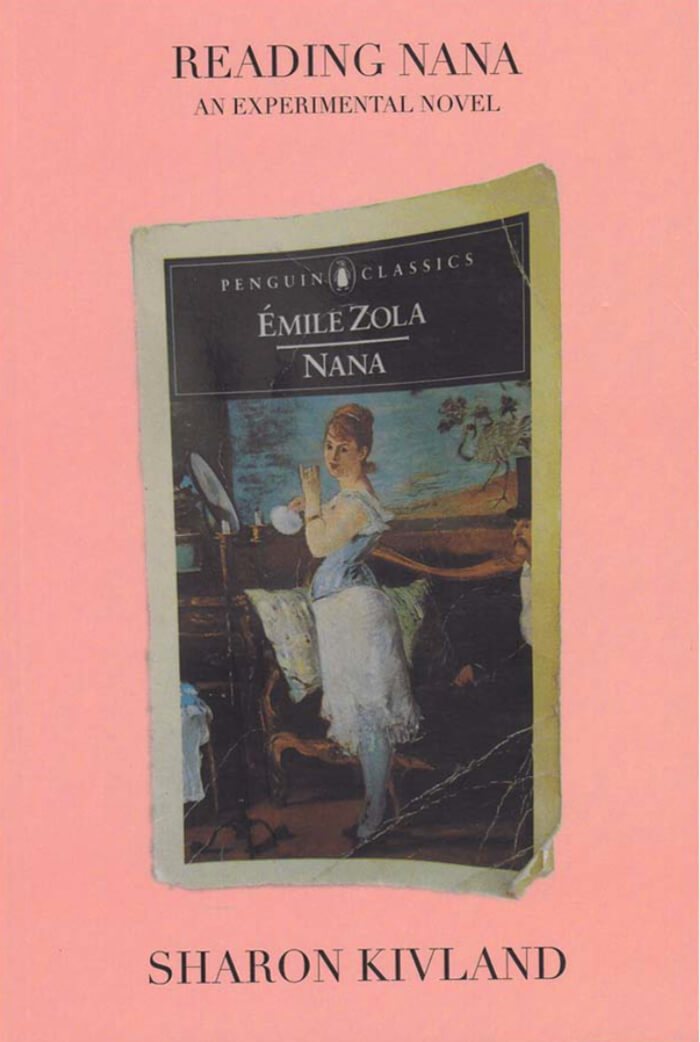

recommendations

Yes, I Am A Destroyer
I travel far across the city, cut it knowingly, concealing behind me the entrances to tunnels, altering the signage. I traverse the grimiest bowels, skirt the farthest wettest edges like a silverfish active only in the hallucinatory hours, to avoid becoming known, to avoid any collusion between my body and theirs, its.
Under the neon sky of a sick city, which might be London, a nameless governess oscillates between lucidity and dissociation, solitude and communication, wage labour and escape attempts. A wild and unreliable narrator-without-character—ardent, delirious, complicit, vengeful, and paranoid—she embodies a perverse and chaotic resistance. Simultaneously demonic and angelic, both maniacal and generous in her fury, accidentally elegant, tongue tied and barbed, she veers towards defiance as devotion. An anti-Bildungsroman in the collapsing first person, Yes, I Am A Destroyer is an unbecoming record of memory and forgetting, of a relentless undoing.
‘Any girl who learns how to read is already a lost girl, wrote the infamous confessionalist Rousseau. But if that lost girl, with insatiable pronoun, bastard spawn perhaps of the exiled Genevan, palmed a pen and confessed—how would that read? What can she know? With relentless intelligence and urgent prosody, Mira Mattar shows us. She invents a narrator in the raging anti-tradition of Violette Leduc and Albertine Sarrazin, leaps beyond the cloying contract of capital with the feminine, of intimacy with violence, to animate a lush document of the refusal of subjection. Much like the young Jean-Jacques, she’s a tutor underpaid for her sensitivity. She is, like him, a thief of small things, a sponge for the edifying comportments of the employing class. What she makes of her servitude—a fabulously grotesque encyclopedia of sensing—is dedicated to female anger. Scrubbing, washing, chewing, frigging, barfing, stealing, moisturising, shitting: every surface, every gesture, is appropriated to her bodily resistance. ‘Live anyway’ is her stoic motto. This glorious tract ends with a call for the anarchical vigour of the animal body we share. Read it and flourish. You will perhaps be invoiced.’
–> Lisa Robertson
Mira Mattar writes fiction and poetry. She is an independent researcher, editor, and tutor. A Palestinian/Jordanian born in the suburbs of London, she continues to live and work there. She has read and published her work widely. Yes, I Am A Destroyer is her first book.

Moi
The straplines of a number of advertisements drawn from magazines of the 1950s are turned into drawings, as though a particularly vain and narcissistic woman speaks (as of course she does), She is ‘en pleine forme’ of her beauty. (2016).

ABÉCÉDAIRE
“I wrote (more or less, for promises are always hard to keep, even those made to oneself ) for five days a week for a year. I wrote no more than a page, or rather, I wrote only for the length of the analytic hour, fifty minutes (though I also practiced the variable session at times)… I followed Freud’s model of train travel for his theory of free association, acting ‘as though, for instance, [you were] a traveller sitting next to the window of a railway carriage and describing to someone inside the carriage the changing views which [you] see outside’. As for my characters, many of their names begin with A. Some of these women exist or existed, others are from fiction, or write fiction. Some are friends or acquaintances. None are credited but a keen reader could recognise many of them. I invented nothing. I am the aleph.”
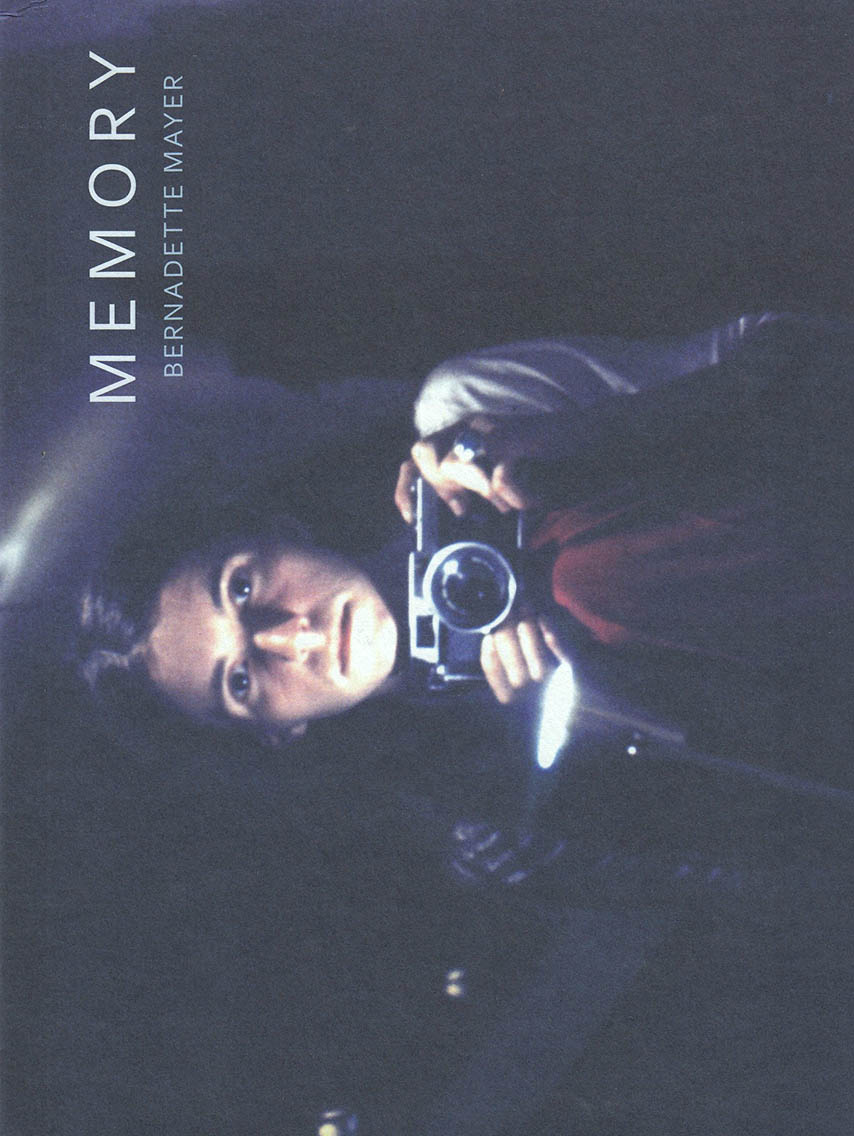
Memory
In July 1971, Bernadette Mayer embarked on an experiment: for one month she shot a roll of 35mm film each day and kept a journal. The result was a conceptual work that investigates the nature of memory, its surfaces, textures and material. Memory is both monumental in scope (over 1,100 photographs, two hundred pages of text and six hours of audio recording) and a groundbreaking work by a poet who is widely regarded as one of the most innovative experimental writers of her generation. Presaging Mayer's durational, constraint-based diaristic works of poetry, it also evinces her extraordinary —and often unheralded— contribution to conceptual art.
Mayer has called Memory "an emotional science project," but it is far from confessional. This boldly experimental record follows the poet's eye as she traverses early morning into night, as quotidian minutiae metamorphose into the lyrical, as her stream of consciousness becomes incantatory. In text and image, Mayer constructs the mercurial consciousness of the present moment from which memory is —as she says— "always there, to be entered, like the world of dreams or an ongoing TV show."
This publication brings together the full sequence of images and text for the first time in book form, making space for a work that has been legendary but mostly invisible. Originally exhibited in 1972 by pioneering gallerist Holly Solomon, it was not shown again in its entirety until 2016 at the Poetry Foundation in Chicago and then again in 2017 in New York City at the CANADA Gallery. The text was published without the photographs in 1975 by North Atlantic Books in an edition that has long been out of print.
Bernadette Mayer (born 1945) is the author of over 30 books, including the acclaimed Midwinter Day (1982), a book-length poem written during a single day in Lenox, Massachusetts, The Desires of Mothers to Please Others in Letters (1994) and Work and Days (2016), which was a finalist for the National Book Critics Circle Award. Associated with the New York School as well as the Language poets, Mayer has also been an influential teacher and editor. In the art world, she is best known for her collaboration with Vito Acconci as editors of the influential mimeographed magazine 0 TO 9.

The Commune
A legend in his home country of Greece but virtually unknown abroad, The Commune is the final work of Marios Chakkas, composed in the months preceding his early death in 1972. Born under the Fascist regime and reared as a socialist revolutionary, The Commune is Chakkas' reckoning with the uncertainty of the past and the madness of the present as the military junta secures its position and the spirit of the socialist insurrection fades. Returning from political exile, Chakkas confronts the decay and ruin of his Athenian neighborhood as he recounts childhood gunfights in the streets, churches filled with asbestos, vanished comrades, and violent squabbles over memorials for executed partisans in his singular voice which swerves from scorching poetic indignation to gallows humor to metaphysical meditation.
Chloe Tsolakoglou is a Greek-American writer who grew up in Athens, Greece. A PhD Student in English and Comparative Literature at Columbia University, her work has been published in or is forthcoming by Denver Quarterly’s FIVES, The Adroit Journal, Cream City Review, and elsewhere.
Translated by Chloe Tsolakoglou
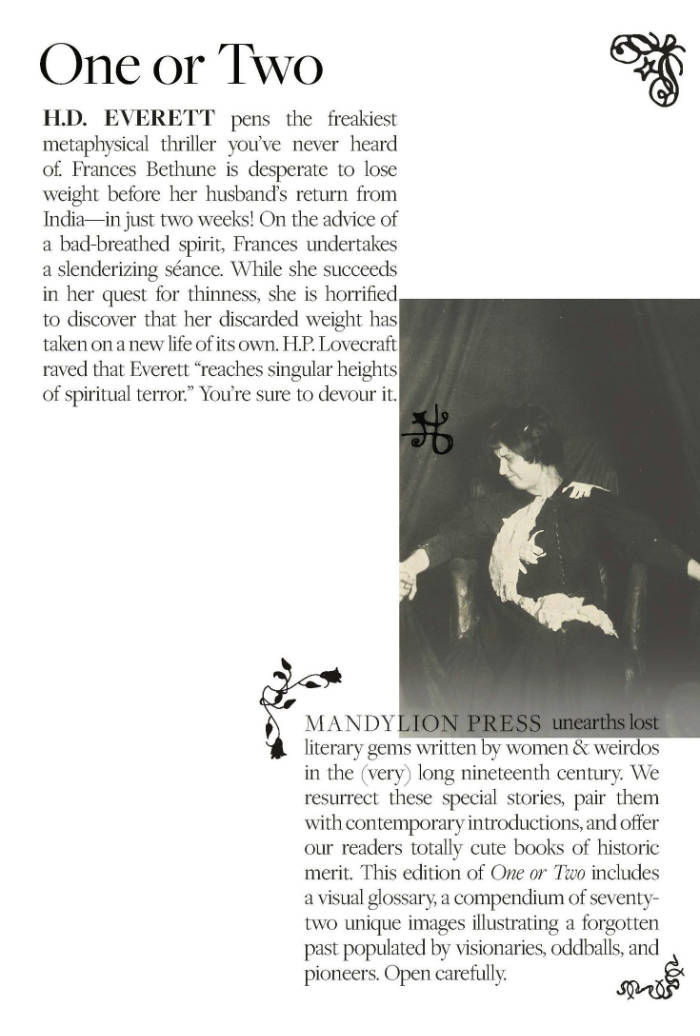
One or Two
Frances Bethune is desperate to lose weight before her husband’s return from India―in just two weeks. On the advice of a bad-breathed spirit, Frances undertakes a slenderizing séance. While she succeeds in her quest for thinness, she is horrified to discover that her discarded weight has taken on a new life of its own. Of this chilling, revolting tale, H.P. Lovecraft raved that Everett "reaches singular heights of spiritual terror." This new edition from Mandylion Press restores Everett’s 1907 masterpiece. It features an original introduction written by Mandylion cofounder Madeline Porsella, as well as a glossary that provides visual, material and affective image footnotes.
Henrietta Dorothy Everett (1851–1923) was born in Kent, England. Between 1896 and 1920, she published 22 books under the pen name Theo Douglas. She was an influential figure in the early days of science fiction and fantasy writing, and was cited in H.P. Lovecraft’s extended 1927 essay "Supernatural Horror in Literature."
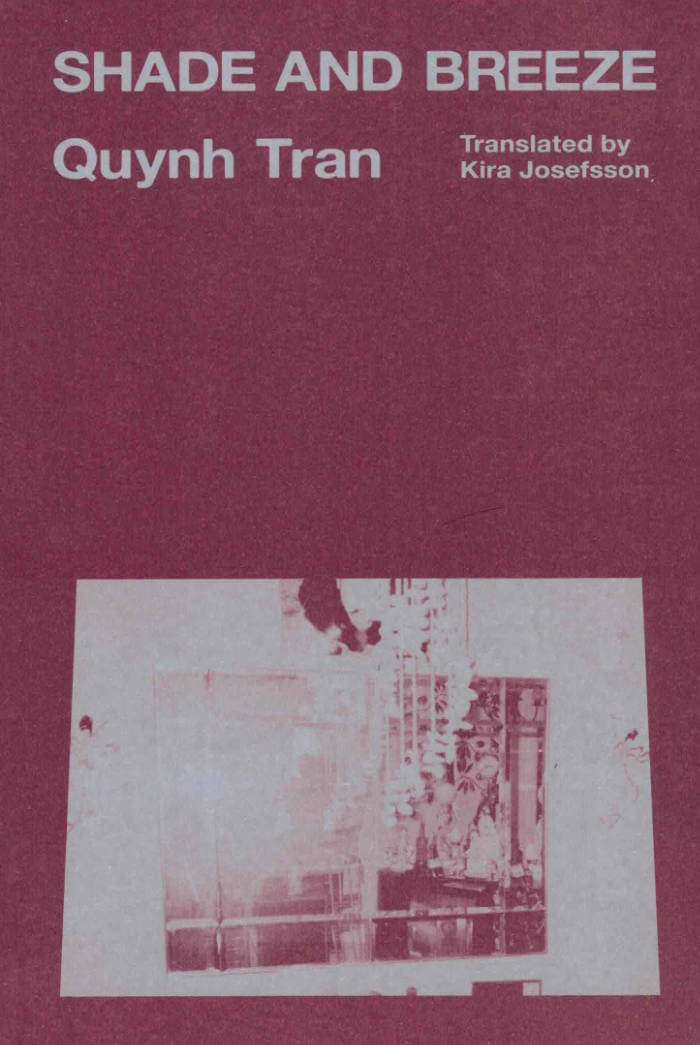
Shade and Breeze
Má dreams of wealth and grandeur, Hieu dreams of Finnish girls. The younger brother, always on the periphery, always an observer, gradually disappears into his schoolwork, mesmerised by his own intellect
The three of them form a solitary world in a small Ostrobothnian town on the west coast of Finland. Má and Hieu, constantly on a collision course with each other and the community’s suffocating social codes. They live among people who want to talk openly about everything, who don’t understand the necessity of sometimes remaining in the shade.
In sensitive and transfixing prose that has the effect of a series of tableaux, and with chapter headings reminiscent of the intertitles in a silent film, Tran’s multi-award-winning debut is a moving story about love, the compulsion to create, and the meaning of family.
Winner of the Runeberg Prize 2022
Winner of the Borås Tidning’s Debutant Prize 2022
Winner of the Svenska Yle Literature Prize 2021
Shortlisted for the Katapult Prize 2022
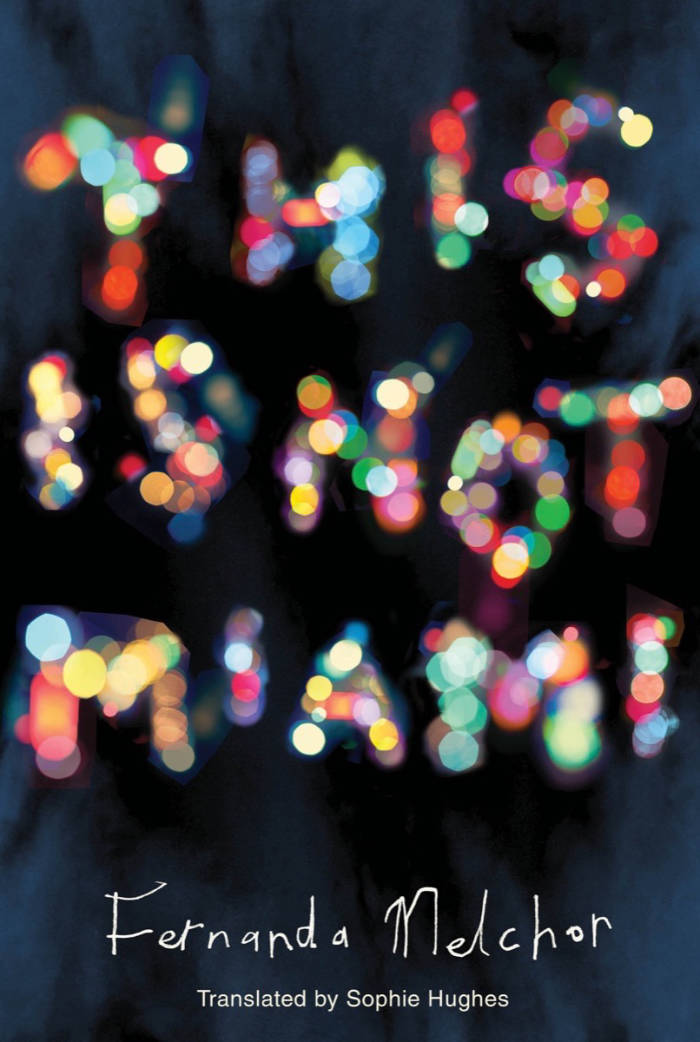
This Is Not Miami
A searing collection of true stories from “one of Mexico’s most exciting new voices” (The Guardian)
Set in and around the Mexican city of Veracruz, This Is Not Miami delivers a series of devastating stories—spiraling from real events—that bleed together reportage and the author’s rich and rigorous imagination.
These narrative nonfiction pieces probe deeply into the motivations of murderers and misfits, into their desires and circumstances, forcing us to understand them—and even empathize—despite our wish to simply label them monsters. As in her hugely acclaimed novels Hurricane Season and Paradais, Fernanda Melchor’s masterful stories show how the violent and shocking aberrations that make the headlines are only the surface ruptures of a society on the brink of chaos.